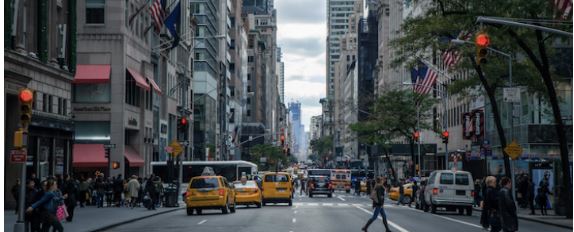Economic Outlook
The S&P 500 is down 5 percent this year despite tremendous year-over-year earnings growth. One of the primary factors weighing on the market: fear over the ongoing international trade war, particularly with China. President Donald Trump has repeatedly cited the U.S. trade deficit with China as grounds for the trade war….CLICK for complete article

Due to the expected slowing global economy, stock market turmoil and the growing headwinds from rising interest rates, some analysts are holding out hope that the Fed might slow the pace of further hikes—even if this goes against the consensus.
It is widely anticipated that the Fed will hike interest rates again this month, which would be the fourth this year, with Fed members noting during a late September meeting of the Federal Open Market Committee that “participants generally anticipated that further gradual increases in the target range for the federal funds rate would most likely be consistent with a sustained economic expansion, strong labor market conditions, and inflation near 2 percent over the medium term”.
Looking ahead to 2019, Fed officials expect at least three rate hikes will be necessary, and one more in 2020. Fed officials expect the key rate to rise to 2.4 percent at the end of the year, 3.1 percent at the end of 2019 and 3.4 percent at the end of 2020, according to their median estimate. CLICK for the rest of the article

One of the most reliable indicators of an economic slowdown just flashed a warning sign this week. On Monday, the yield curve between the five-year Treasury yield and three-year Treasury yield inverted, or turned negative, for the first time since 2007. What this means is the shorter-maturity bond now pays more than the longer-maturity bond, suggesting investors believe the government is less likely to service the debt it owes in three years than in five years. Such an inversion has historically portended a …Click here for full article.

As of right now GOOGLE / WAYMO has begun monetizing some of their self driving vehicles. Development of WAYMO self driving vehicles has been ongoing for over 10 years, and includes cars and trucks, as each is seen to have commercial potential. In four suburbs of Phoenix Arizona (about a 160 km zone) self driving WAYMO ONE taxis are now in operation. Generating revenue after all these years of development and testing is a significant milestone, and puts WAYMO ahead of rivals like GM’s Cruise Automation, and Uber Technologies. All players in this field will certainly want to attract and keep customers and begin to recoup the money invested in the technology so far.
So, how does a customer use the WAYMO ONE taxi service? First, you need to download the WAYMO ONE app and provide credit card details, and then you can use the app to notify the service of your needs, providing your location and a destination. Much like UBER and LYFT, the app will provide a price quote and a time for pick-up. The service is touted to be operating 24 hours a day, however, it is available now only to a few hundred residents who signed up last year, and the exact number of taxis in operation has not been revealed by WAYMO. For cost comparison, the WAYMO charge for a 15 minute ride (about 3 miles) is $7.60, whereas the comparable LYFT charge is $7.20.
At this time WAYMO ONE taxis include a human in the driver’s seat, to intervene only in emergencies, and there is the app or in-car console to link passengers to a WAYMO ONE agent for answering questions and documenting comments. Some report that the ride is a little slow and sometimes jerky. WAYMO works with passenger feedback to help refine all aspects of the WAYMO ONE taxi experience. Only a handful of other startups have monetized driverless technology, in small ways, such as Boston’s OPTIMUS RIDE that has contracts to provide driverless vehicle services in enclosed, low speed environments, like gated business parks and seniors facilities.
There are still significant challenges to making a buck in the autonomous vehicle space. All across the USA there are many laws and regulations that fail to provide a coherent framework for designing the vehicles or the software applications needed to put them to work on their own. Estimates are that over $1 billion has been spent on driverless technology, and over 10 million miles have been traveled. Still, everyone is proceeding with great caution, wanting to ensure that the early adopters have only safe and satisfying experiences, generating enthusiasm, curiosity, and confidence. Given all that, the sky seems to be the limit for this exciting, disruptive technology.
Let Trend Disruptors be your guide to the future, as we continue to identify technology investment opportunities that can lead to financial success. Click here to read more Trend Disruptor blogs.

There are presently about 96 million Americans whom are 16+ years old and considered to be “not in the labor force” (those neither working nor actively looking for work). Those “not in labor force” has increased by over 17 million since 2008, while those employed has increased by 11 million, and those employed full time has increased by nearly 8 million. But these will be remembered as the good times compared to what is coming…. CLICK for complete article















